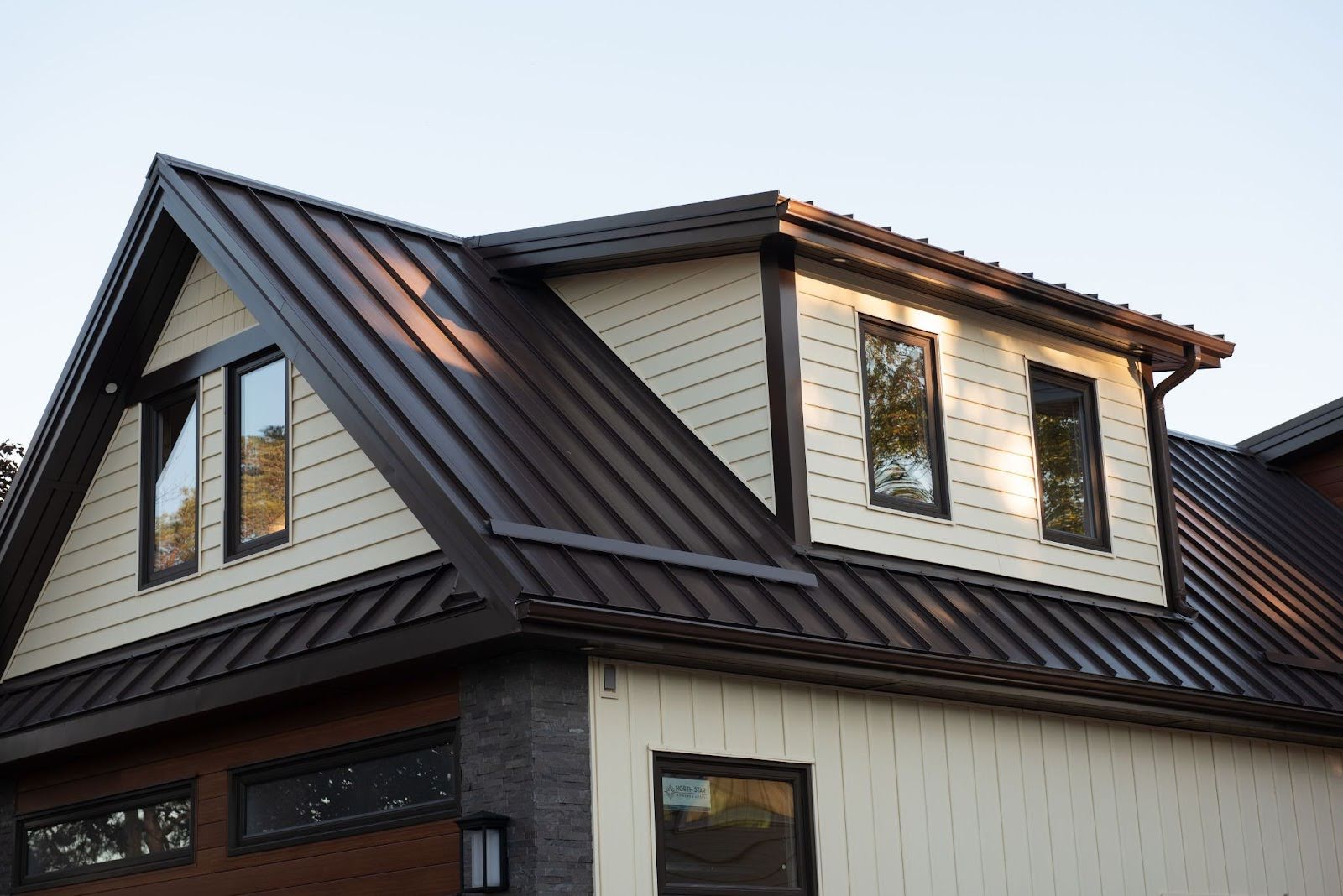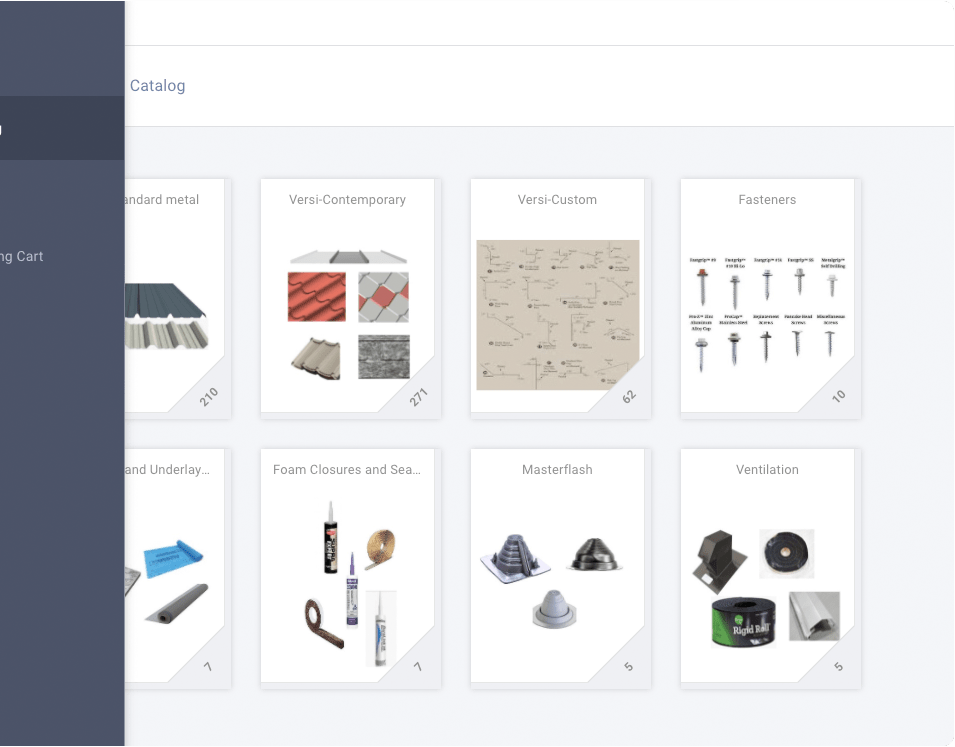When it comes to selecting the right roofing material, the debate between textured and smooth metal roofs is gaining traction among homeowners.
Metal roofing, known for its durability and efficiency, offers two distinct finishes: textured and smooth. Each has unique benefits and aesthetic appeals.
This article will discover the differences between textured metal roofs and smooth roofs, helping you make an informed decision based on your needs and preferences.
What is a Textured Metal Roof?
A textured metal roof features a patterned surface that can vary from subtle to pronounced. These textures are not just for looks, they also add structural strength to the roof.
Common textures include ridges, bumps, and dimpled patterns, which can mimic the look of traditional shingles or tiles. Textured metal panels are often chosen for their rustic or traditional appearance, making them popular in residential areas where a homely aesthetic is desired.

What is a Smooth Metal Roof?
In contrast, smooth metal roofs boast a sleek, unpatterned surface that reflects a more modern design ethos. This type of roofing is typically characterized by its shiny or matte finish and is favoured for its minimalist and contemporary look. Smooth metal roofs are especially common in commercial buildings but are becoming increasingly popular in modern residential designs as well.

Durability and Performance
When comparing the durability of a crinkle metal roof vs a smooth metal roof, both are excellent choices. However, crinkle panels may have a slight edge due to their ability to hide minor imperfections, scratches, and debris, which can be more visible on smooth surfaces.
Additionally, the structure of textured metal can provide extra rigidity, enhancing its resistance to damage from environmental factors like hail or heavy rain.
Energy Efficiency and Environmental Impact
Metal roofs are well-regarded for their energy efficiency, primarily due to their ability to reflect solar heat.
Textured metal panels, with their uneven surfaces, can scatter light and heat more effectively, potentially offering better heat reflectivity on sunny days.
However, smooth metal panels are also capable of reflecting a significant amount of heat, especially when treated with a reflective coating.
Both roof types are environmentally friendly options as they are typically made from recycled materials and are fully recyclable at the end of their lifespan. The choice here would largely depend on specific product ratings and the exact materials used.
Cost Comparison
Initial installation costs for both types of metal roofing can vary depending on the complexity of the roof design and the specific type of metal used.
Generally, smooth metal roofs might be slightly less expensive due to the simplicity of their finish.
However, the cost differences are not significant, and both types offer long-term savings through low maintenance needs and reduced energy bills.

Aesthetics and Suitability
Choosing between a smooth or textured metal roofing system often comes down to aesthetic preference and the architectural style of your house. Textured metal panels can enhance traditional homes with their classic appeal, while smooth roofs can complement modern or industrial designs with their clean lines.
Colour options are plentiful for both types, but the final appearance will significantly influence how the building blends with its surroundings.
Pros and Cons Expanded
Textured Metal Roofs:
Pros:
- Better at Hiding Dirt and Debris: Textured metal roofs have an uneven surface that helps in disguising small accumulations of dirt, leaves, and other environmental debris, which can be particularly advantageous in wooded or high-pollen areas.
- Enhanced Rigidity: The added texture increases the structural strength of the roofing material. This can help in resisting physical damage from external forces such as hail or branches, potentially reducing repair needs over time.
- Traditional Aesthetic: Textured roofs can mimic the look of classic roofing materials like cedar shakes or slate tiles, making them a preferred choice for those looking to maintain or enhance the traditional architectural styles of their homes.
Cons:
- Can be Slightly More Expensive: The manufacturing process for textured metal roofs can be more complex, leading to higher costs. This might affect the budget considerations for some homeowners.
- Limited Modern Appeal: While excellent for traditional designs, textured metal roofs might not always align with contemporary or minimalist architectural styles, which could be a drawback for modern homes.
Smooth Metal Roofs:
Pros:
- Sleek and Modern Look: Smooth metal roofs offer a clean, streamlined appearance that is highly suited for modern, contemporary, or industrial building designs. Their flat surfaces can also make them a canvas for architectural innovation.
- Potentially Lower Initial Costs: The production process for smooth metal roofs is typically less complex than that for textured varieties. This can result in slightly lower initial costs, making smooth roofs a more budget-friendly option in some cases.
- High Reflectivity: The flat, unobstructed surface of smooth metal roofs is excellent at reflecting sunlight. This feature can significantly enhance the energy efficiency of a building by reducing cooling costs in sunny climates.
Cons:
- Shows Imperfections and Debris More Readily: Smooth surfaces can make things like dust, fingerprints, and small dents more visible, which might require more frequent cleaning to maintain the aesthetic appeal.
- May Require More Frequent Cleaning: Because they show imperfections easily, smooth metal roofing may need to be cleaned more often to retain their appealing appearance, particularly in areas exposed to high levels of dust or industrial pollutants.
Conclusion
Both textured and smooth metal roofs offer excellent benefits, making them suitable choices for various applications. Your decision should consider factors like the climate, the building’s architectural style, and personal preferences regarding aesthetics and maintenance.
To explore more about which metal roofing type would be best for your property, reach out to Country Towne. We can provide tailored advice and help you navigate the options based on your specific circumstances.



Share This Article
Choose Your Platform: Facebook Twitter Google Plus Linkedin